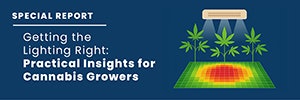On Jan. 15, the U.S. Department of Agriculture’s (USDA’s) Agricultural Marketing Service (AMS) released its final rule on hemp. The new rule includes several changes from the USDA’s interim final rule, including:
- increasing the sampling window (the maximum amount of time allowed between sampling for THC testing and the planned harvest date) from 15 days to 30.
- allowing states to implement “performance-based” sampling, leading to additional flexibility in procedures.
- increasing the negligence level from 0.5% THC to 1%.
Meanwhile, the total THC limit and DEA lab requirement for testing hemp remain the same (although the lab requirement has been delayed until 2022). Here, industry members share their thoughts on the rule and how it may shape the industry moving forward.

“I am pleased that USDA listened to feedback from the hemp industry and farmers as they finalized regulations for hemp production. The new rules mean less crops will be non-compliant, protecting farmers from crop destruction and losses. This and other helpful provisions make the new hemp rules a significant step in the right direction.”
Eric Steenstra, president, Vote Hemp, an industry political advocacy organization

“As far as negligence is concerned and sampling and more guidance around testing and what parts of the plant you’re testing–they’re positive developments. I don’t want any of my brothers and sisters in the industry thinking I’m sitting here saying it’s [a] great result. It’s a better result, but there’s still work to be done.”
Jonathan Havens, co-chair, Saul Ewing Arnstein & Lehr’s Cannabis Law Practice and Food, Beverage, and Agribusiness Practice

“Overall, the final rule’s contents in some ways show progress and demonstrate the USDA has looked into the industry as part of its public comment process. In another way, the final rule remains stagnant.”
Garrett Graff, managing partner, Hoban Law Group

“The transition from prohibition to a legal and regulated system takes time, and USDA’s final rule is a historic step forward for hemp in the U.S. … We are undoubtedly making progress, and we will continue to work with regulators and through Congress to perfect the regulatory structure for hemp.”
Shawn Hauser, partner and chair, Vicente Sederberg LLP’s Hemp and Cannabinoids Department

“The regulations cannot override what’s written in law. In order for a regulation to override what’s written in law, the law needs to change. To ask the USDA to override the U.S. congressional definition of hemp is not something that they had the authority to do.”
Joy Beckerman, principal, Hemp Ace International, a company that provides hemp consulting and legal support services, on the 0.3% THC limit remaining in the final rule despite numerous attempts and calls from industry constituents to change it

“I’m an advocate [for] increasing [the THC percentage], period. The 0.3% was arbitrary. It wasn’t based on any science or data to say, you know, ‘At 0.4%, you’re going to get high.’ It was just a number that was chosen at random by all accounts. So, it’s hard to justify it when there’s no data to support it.”
Deepank Utkhede, chief operations officer, Vantage Hemp, a large-scale CBD extraction and manufacturer located in Greeley, Colo., on the 0.3% THC limit remaining in the final rule















